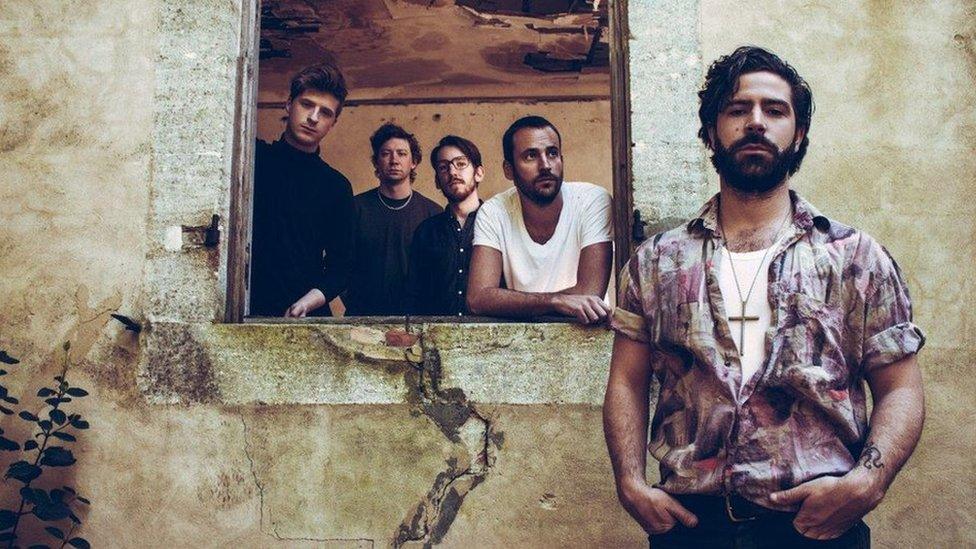Foals: 'We relish the potency of a big, knuckle-dragging riff'
- Published

Foals (L-R): Jack Bevan, Yannis Philippakis, Jimmy Smith, Edwin Congreave
Double albums are a notoriously risky prospect.
For every classic like Sign O' The Times or Exile On Main Street, there's a skip-load of failed experiments and self-indulgent nonsense. Even The Beatles' White Album could have done with a quick trim (Piggies, anyone?)
So it was with trepidation that fans greeted the announcement of Foals' newest project, a sprawling, double-disc epic that promised to address crumbling political systems, ecological crises and social isolation with hyperspace rhythms and arena-sized rock riffs.
Even more nerve-wracking, it was the Oxford band's first record without bassist Walter Gervers; and, for the first time in their 15-year history, they decided to produce the whole thing by themselves,
"It could have been an absolute stinker," concedes frontman Yannis Philippakis.
"There's a potential when you self-produce to really get lost in your own crazy maze. And we kind of did, but we got through it."
To keep it digestible, the record was split in two. Everything Not Saved Will Be Lost Part One arrived in March, reaching number two in the charts and earning Foals their third Mercury Prize nomination.
Part Two hits the shelves (or whatever the streaming equivalent of shelves is) this week - picking up the story from the first volume's closing tracks, where "the hedges are on fire" and "the birds are singing, 'it's the end of the world'".
"In part one there's a sense of being overwhelmed by these enormous, monolithic problems," says Philippakis, "but in part two, the songs are taking place in the aftermath of the wreckage and there's a sense of, 'Well, I'm still here, I'm still standing,' and how do you persevere and find a sense of purpose?"
Sitting on a flight case backstage at the Mercury Prize, with his hand wrapped in bandages, the star talked us through Part Two's key moments - from the artwork to its lyrics and the unconventional release strategy.

Gardening was a key part of making the album
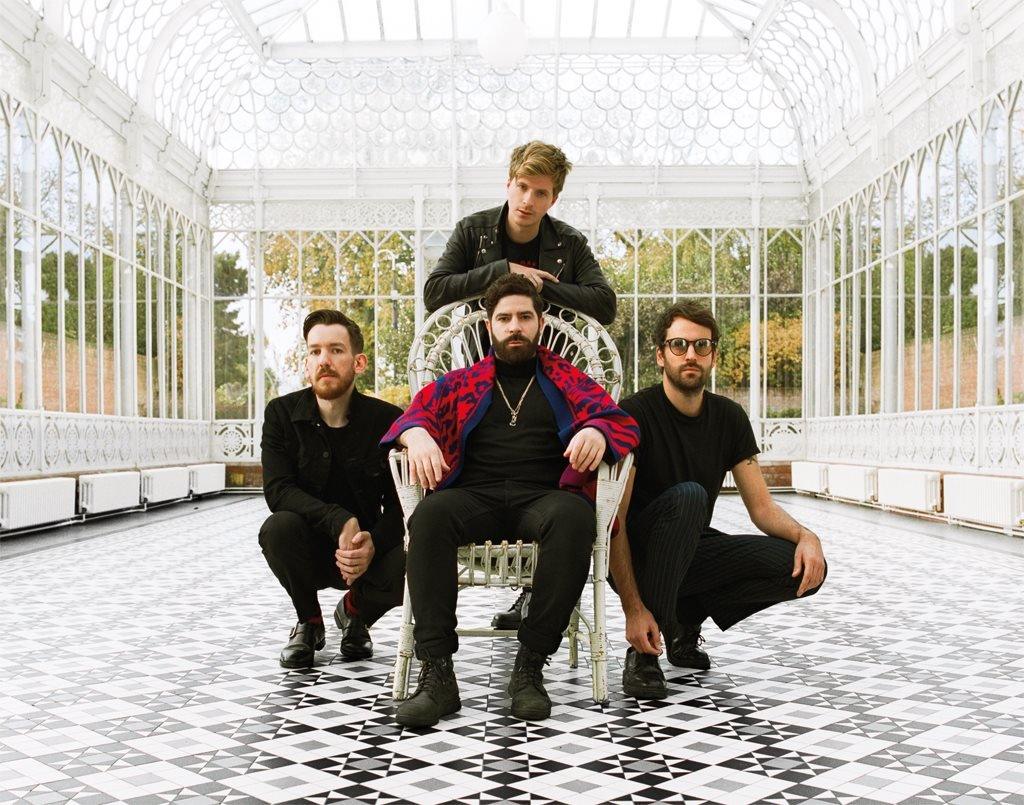
Yannis in his greenhouse, yesterday
We took some time off before making this record, because I didn't want to write from a place of obligation or routine. I had a craving for getting lost in domestic, small routines: Laundry, cat litter and gardening, which I find incredibly therapeutic.
I like the rhythm of it. You plant something and you're responsible for it, and you see it grow from seedling to fruit. Maybe as a contrast to touring, I like being anchored in one spot. And I feel like there's a connection to my parents and grandparents. There's something benevolent and ancestral about growing things like vegetables.


The album opens in the ruins of the old world
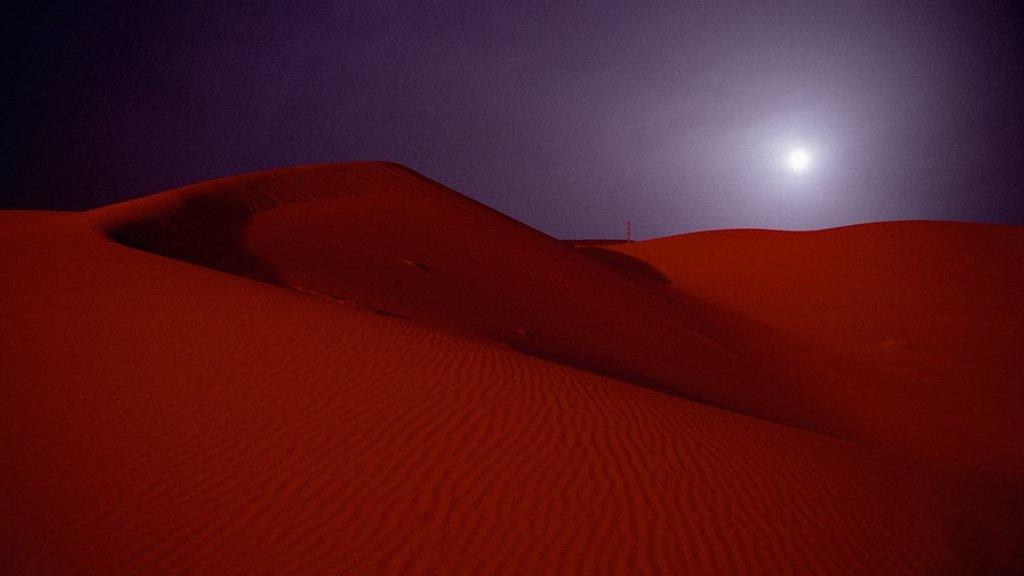
Red Desert is an instrumental that Jimmy [Smith, guitarist] wrote and sent it to me. I instantly felt it could have been an alternate soundtrack to Kubrick's 2001 - it conjures up this image of a barren, primitive, broken landscape.
At the end of Part One, it descends into fire imagery and there's a sense of defeat - so this was the perfect way to open up Part Two. You're re-entering the world that ended in part one. I guess it's like a eulogy.


Black Bull and Like Lightning are the album's 'defiant, menacing' centrepiece
Allow YouTube content?
This article contains content provided by Google YouTube. We ask for your permission before anything is loaded, as they may be using cookies and other technologies. You may want to read Google’s cookie policy, external and privacy policy, external before accepting. To view this content choose ‘accept and continue’.
Those are some of the crudest songs we've written, in terms of riffs. We were really relishing the feeling of just digging into our instruments and the potency of a big, knuckle-dragging riff on a guitar. We're enjoying that in an almost defiant way.
Black Bull's lyrics tap into this persona I sometimes feel on stage - this megalomaniacal character that feels all-powerful and immortal and untouchable. I wanted to fill the song with that type of dangerous, masculine energy so that it would act like blotting paper for all the toxic or destructive feelings you can have.
For me, there's something dangerous that I need to keep check of.


Releasing two albums reflects people's listening habits
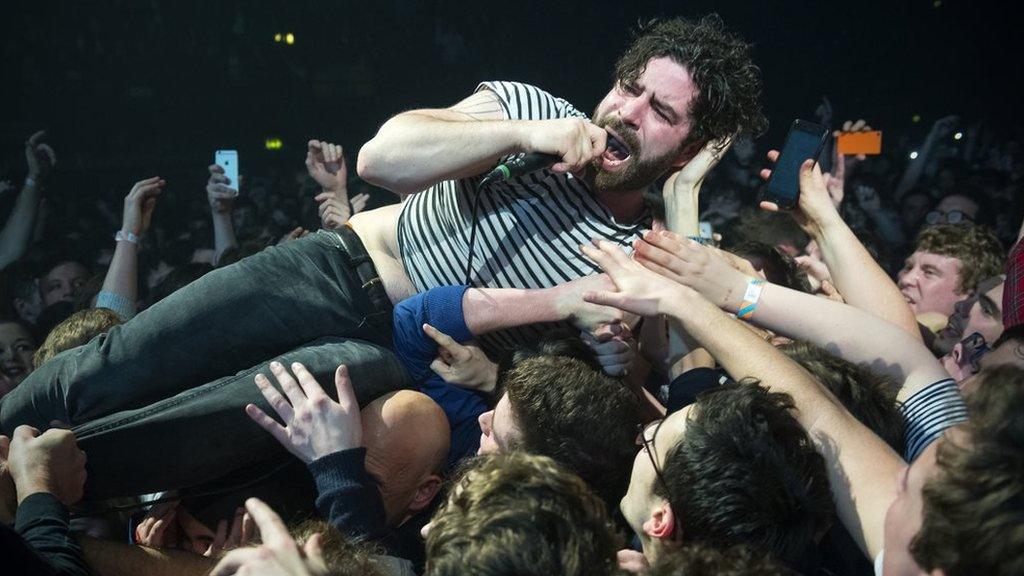
The band's live shows are electric
We didn't go in with the intention of doing two records, but we hit a purple patch and there was symmetry to the songs, so it was easy to cleave them into two distinct bodies.
But it's also a response to the way the music industry's changed. People are just burning through music a lot quicker. The consumption rates are faster, which is a shame. If you spend two years working on something, to think that it's being consumed and discarded quite quickly is actually really troubling.


The Runner has a dual meaning
Allow YouTube content?
This article contains content provided by Google YouTube. We ask for your permission before anything is loaded, as they may be using cookies and other technologies. You may want to read Google’s cookie policy, external and privacy policy, external before accepting. To view this content choose ‘accept and continue’.
We came up with that riff in a sound check and it just felt good on a bone marrow level. We didn't really question it as a piece of music, it was just something where we knew it had a power to it.
It existed for a while before I found a way in with the vocals, and then I had the idea of the protagonist running through the remnants of what exists, and battling that but also battling the internal depletion. So it can work on a level where it's about depression.


Yannis was inspired by an architect who was turned into a diamond
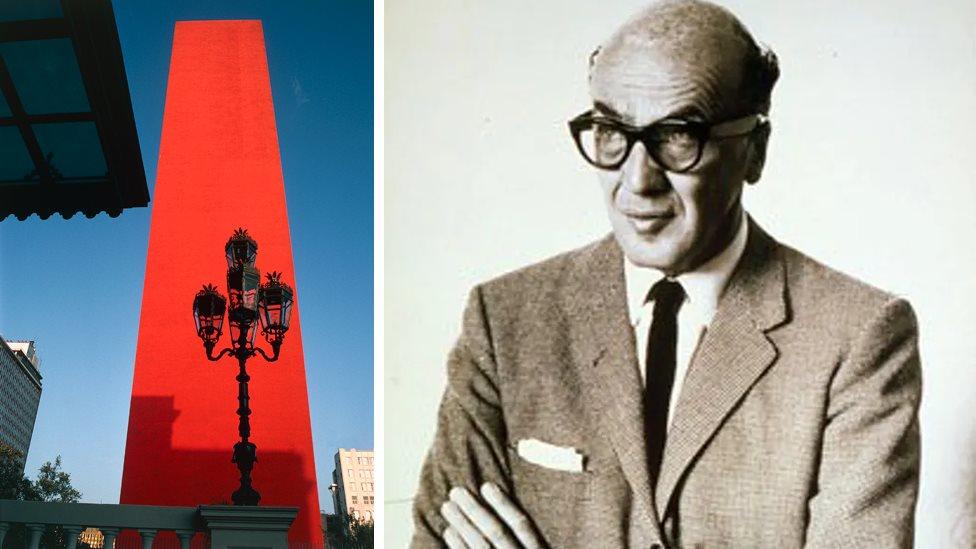
Luis Barragan was known for his colourful architectural designs
Ikaria and 10,000 Feet are the turning points of the album. That's where it starts to become about mortality.
I was interested in the idea of changing states, and I was really struck by the story of an architect from Mexico called Luis Barragán. There was a fight over his estate and, to cut a long story short, his family donated some of his ashes in order to get access to his archive, and those ashes were turned into a diamond, external that's now in an engagement ring worn by a wealthy socialite lady.
I don't know why, but I just became preoccupied with that story. It seemed a fitting conclusion for the album that it should become about no longer being bodily here - so the record starts to go off into the ether.


The artwork was a 'godsend'
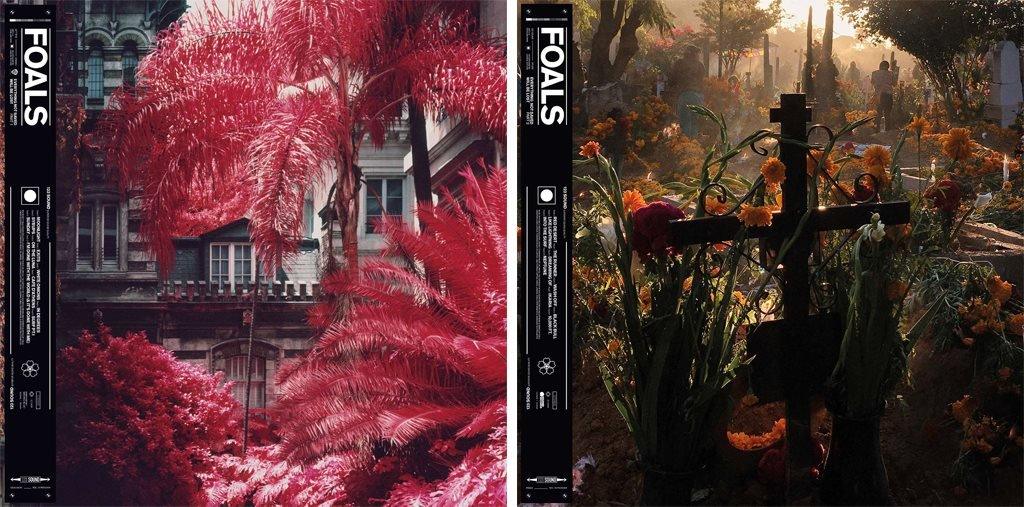
I was struck by the photographer Vicente Muñoz, external, who's from Ecuador. He uses infra-red film to take images of lush, red foliage, interacting with buildings. And when I read about his work, I learned he was dealing with the conflict between man's accomplishments and nature - so that felt like a godsend, because it encapsulated what a lot of record one is. Especially because we felt that Part One was a "red" record; and as a band, we hadn't made a red record since our first album [Antidotes].
The cover on Part Two is photographed by Maggie Steber, external, who's a National Geographic photographer, and it's of a cross in the Day of the Dead ceremony in Oaxaca. Again, we felt the orange and black colour scheme fitted the palette of the record - which has a sense of mortality to it.
I essentially just saw both the pictures and was struck by them on a gut level, but then the meanings behind the pictures resonated exactly with what we wanted, so it coalesced beautifully.


The final lyrics sum up the whole, two-album project
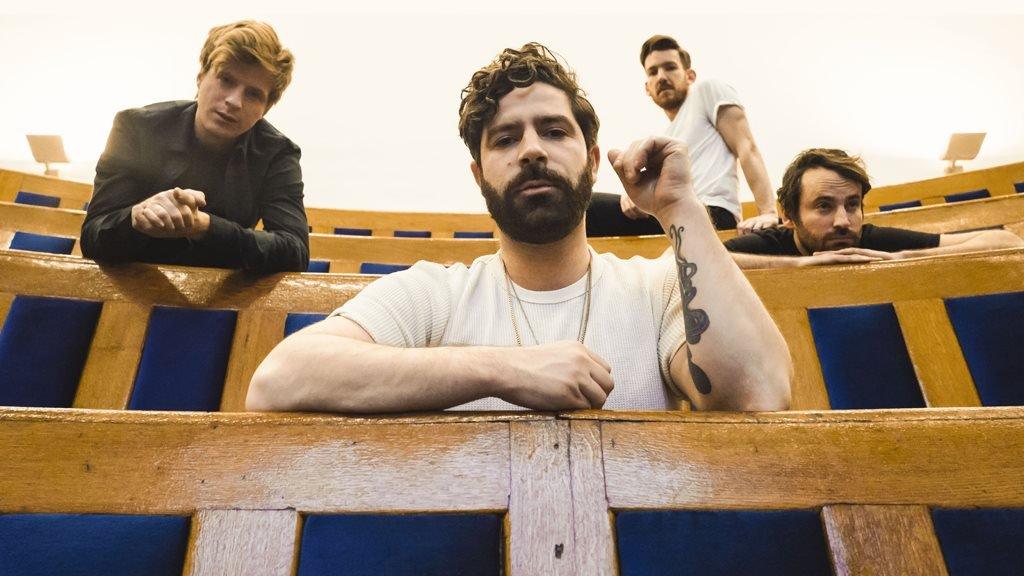
"Time brings low the best of things / When we open our eyes".
Do I have to explain that? It's just that everything good in the world - whether it's our own individual lives, or relationships or the Egyptian empire, or human society or civilisation as a whole - everything will pass. Everything is ephemeral at a certain point, and that's what it's all about.

Follow us on Facebook, external, or on Twitter @BBCNewsEnts, external. If you have a story suggestion email entertainment.news@bbc.co.uk, external.
- Published19 September 2019
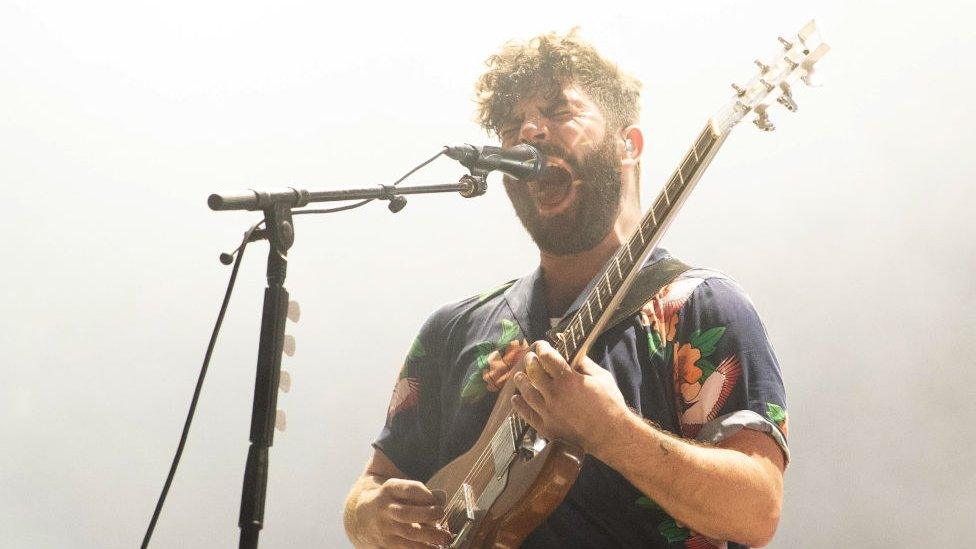
- Published27 August 2015
